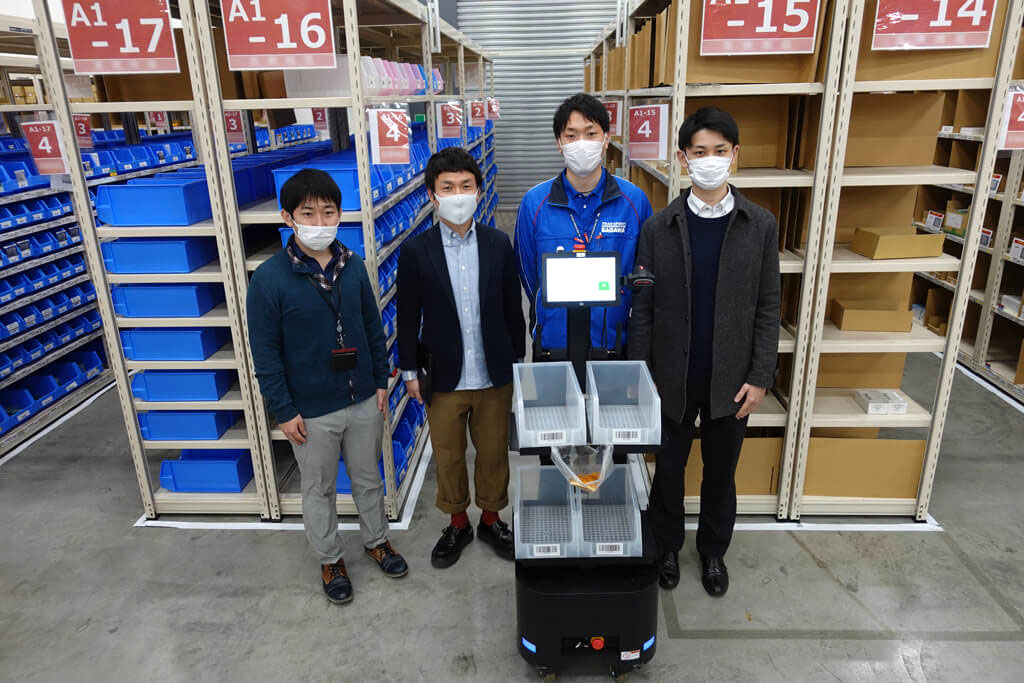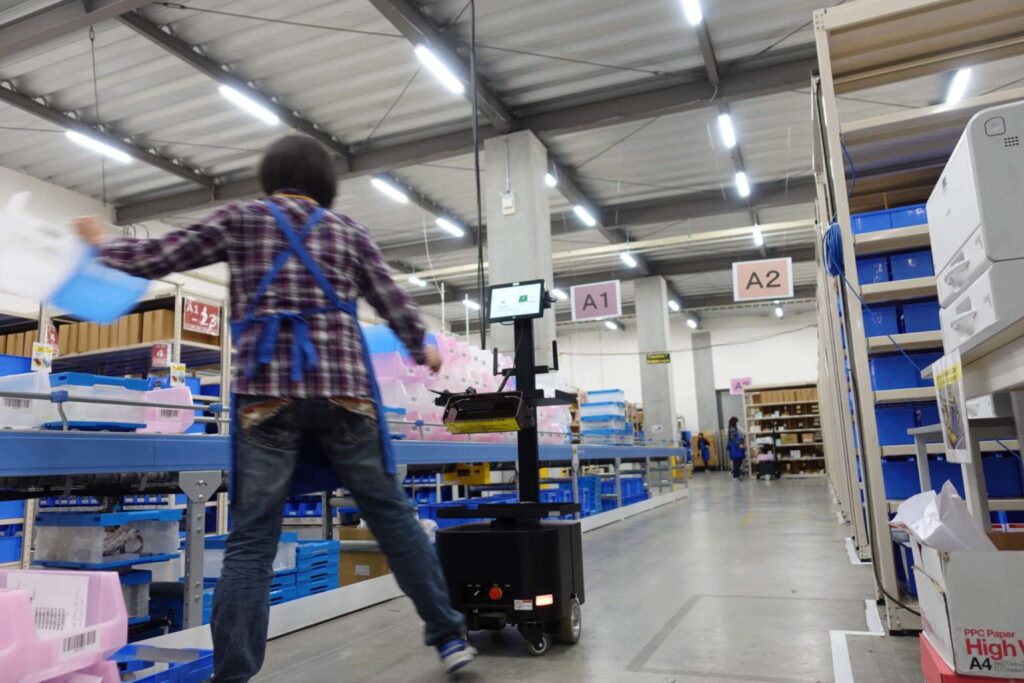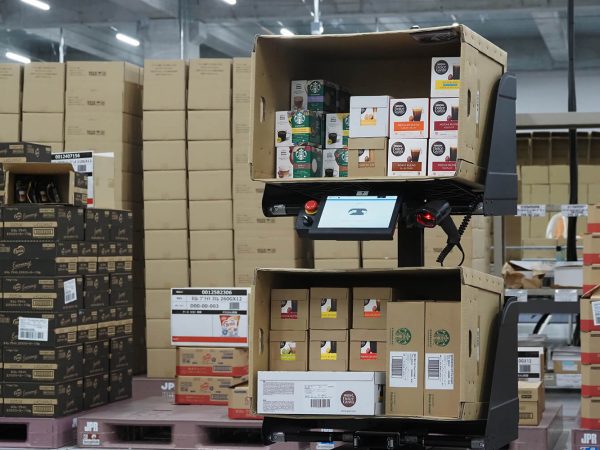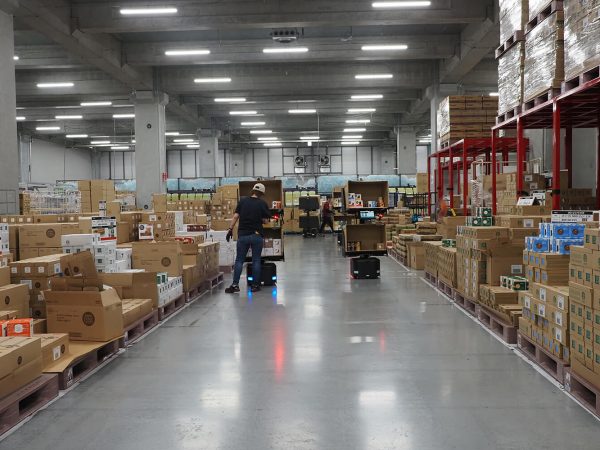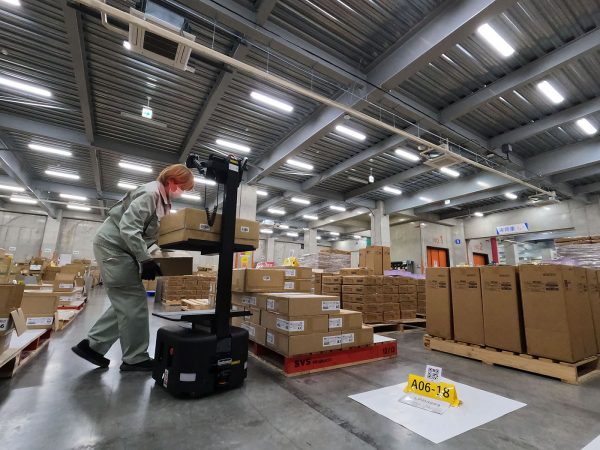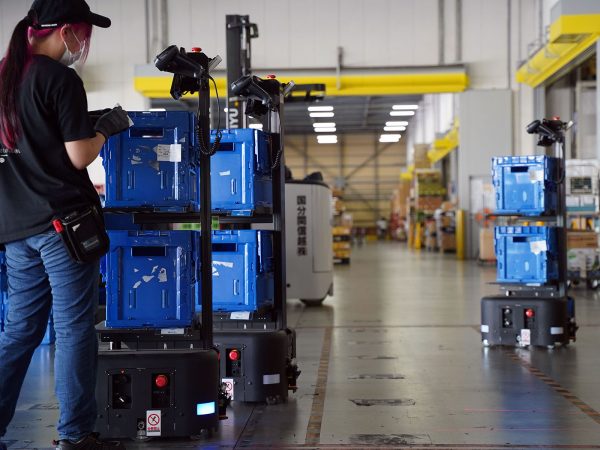Sagawa Global Logistics Increases Productivity with AMR Introduction
Collaborative Robots Save Manpower, Workloads at 3PL Warehouse
For those considering the use of collaborative robots to improve their logistics warehouses, case studies of companies that have actually introduced such robots can be very helpful. Here, , we explore the behind-the-scenes story of an actual AMR implementation, from conception to implementation, featuring interviews from key staff members.
Sagawa Global Logistics Co., Ltd.
Industry: 3PL
Number of Staff: 11 persons/day
Number of Units installed: 11 units
AMR Operation Date: August 2020 –
Introduction form: Subscription (monthly use type)
Sagawa Global Logistics (SGL), 3PL (Third Party Logistics), a company within the SG Holdings Group, provides logistics consultation as well as platform logistics services.
The robots were installed in a logistics warehouse that manages the shipment of B2B products within a large site located in Kashiwa City, Chiba Prefecture. Eleven picking robots from Rapyuta Robotics were introduced and have remained in full operation in the warehouse since August of 2020. In this Q&A style interview, we reveal the pre-introduction background and the actual results, post-introduction. We interviewed two staff members who were involved in the AMR introduction from consideration to implementation.
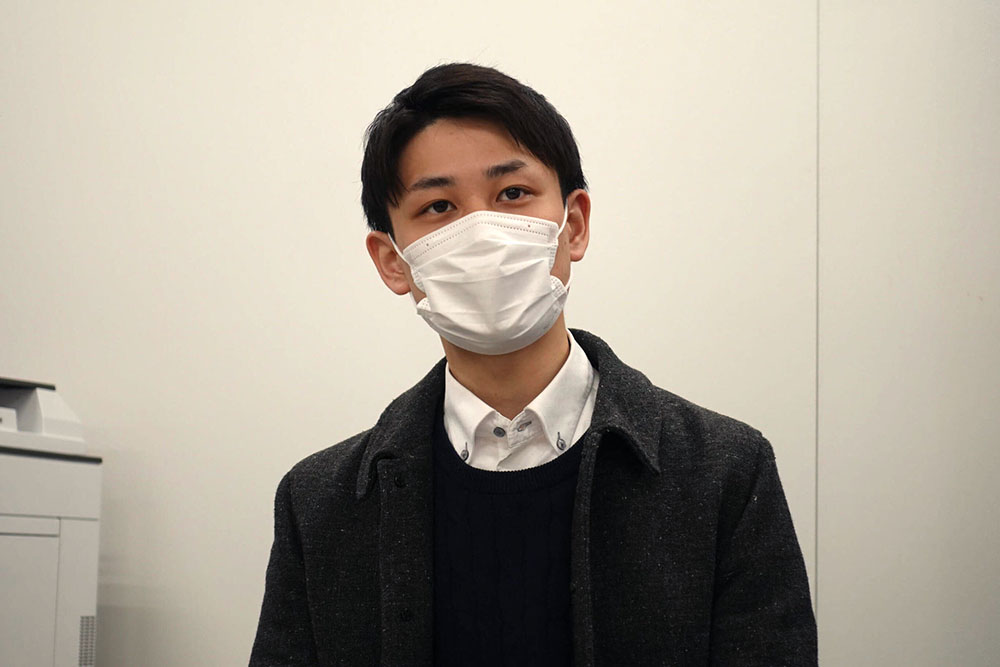
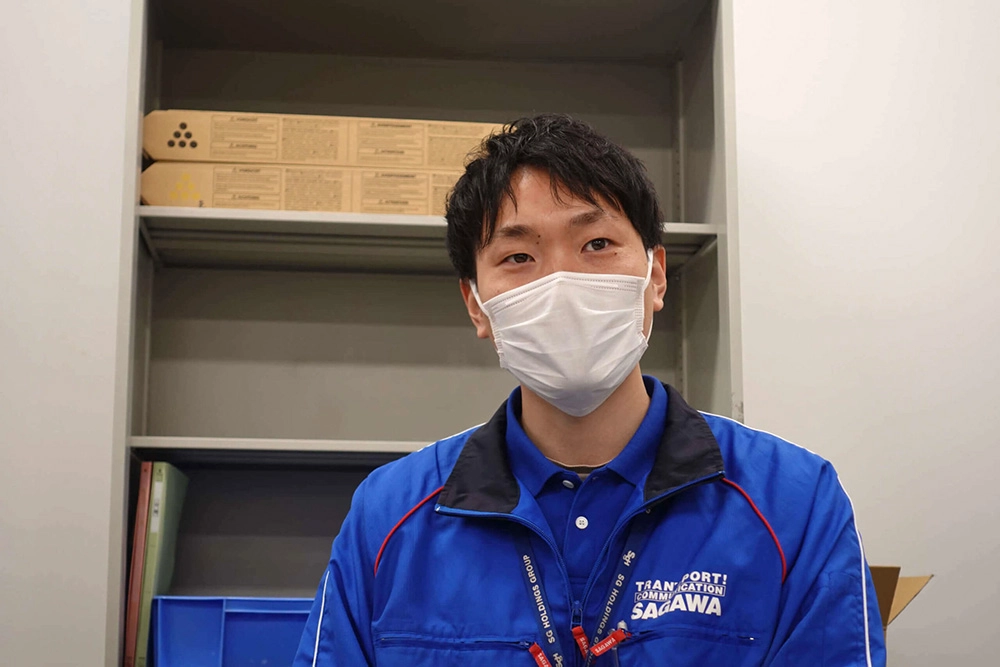
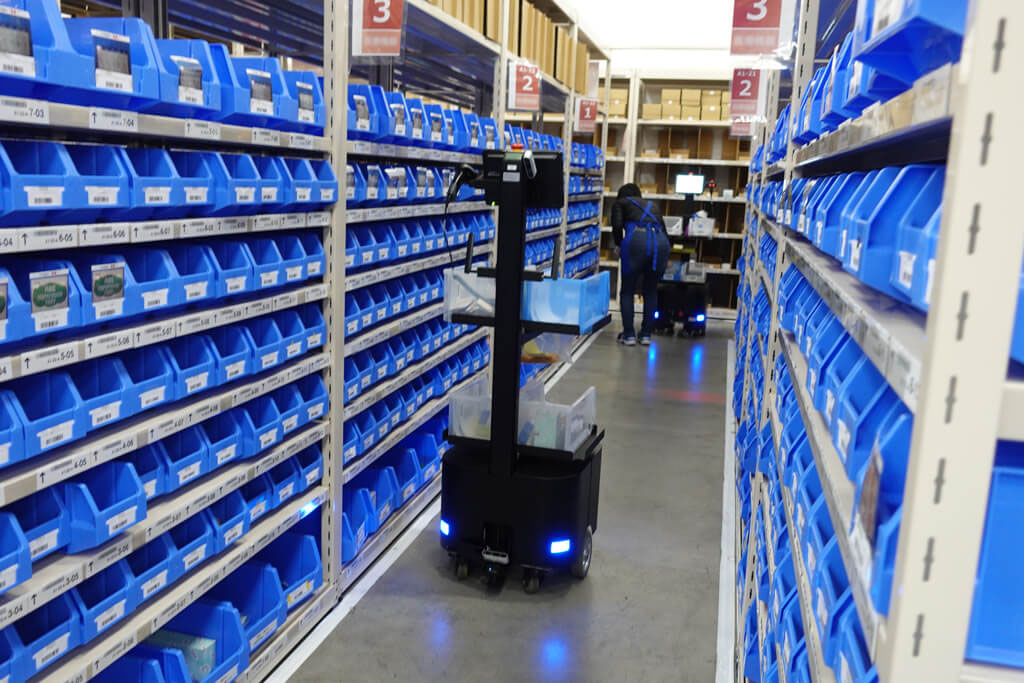
Q. What made you decide to introduce the AMR?
“First, to solve the labor shortage. Our main mission was to improve efficiency and save manpower by automating the daily logistics operations in our warehouses, and to prepare for the risk of future labor shortages,” commented Mr. Otani.
“Second, to reduce long working hours and workload.e were challenged to reduce the workload itself. When there is a labor shortage, it inevitably places a heavy burden on on-site staff. We want our staff to work for us in the long term, and that was a major motivation for us to introduce the system.
“And third,” he added, “to create a case study of operations with robots.e at SGL wanted to incorporate new technology. We believe that operations that integrate people and robots will expand in the future, so we introduced the system to the Kashiwa SRC as a way to create examples of such operations.”
Q. Has the fact that minimum wages are rising every year had an impact on the introduction of the system?
“At the Kashiwa site, the unit cost of employment in the area is rising every year. Even if we wanted to hire more people during the busy season, we couldn’t get them. If we end up having to compete on price, it will be difficult for us to continue to expand our business. So one of our goals for the sales office was to reduce the risk by robotizing at least part of the warehouse,” said Mr. Otani.
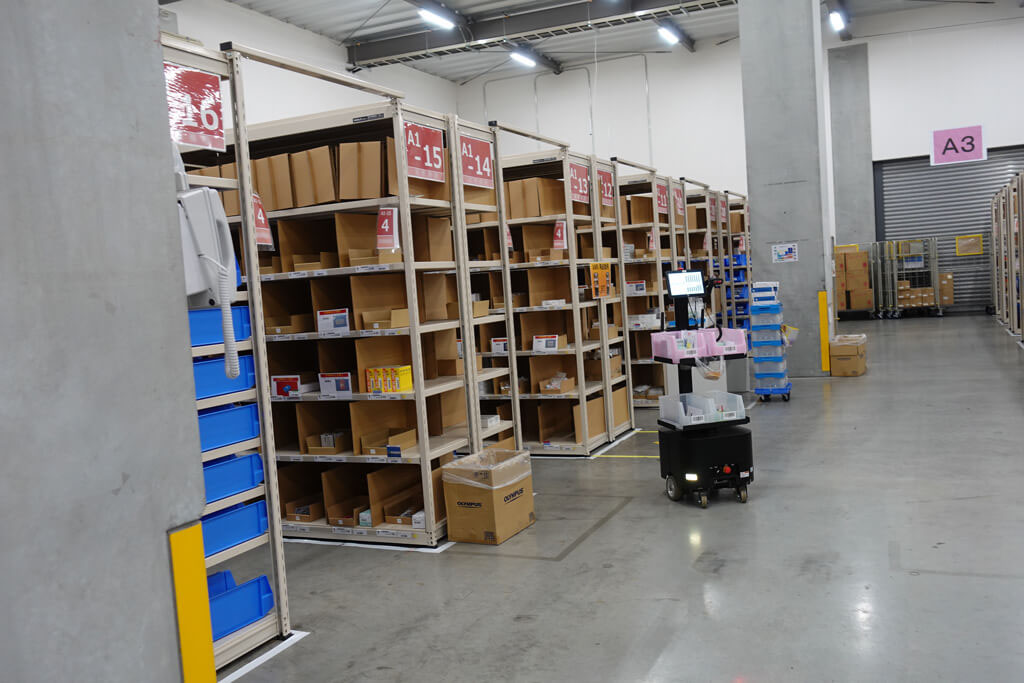
Q. How did you come to consider introducing this system?
“We first considered it in 2018, when we were talking with the team at Rapyuta Robotics (RR). We said at that time that we would try a demonstration experiment first. The demonstration experiment was realized in the spring of 2019,” Mr. Wakamatsu stated.
“In the experiment, we measured the number of steps taken and the amount of time spent working. We measured this against the time we spent working with the AMRs. At this point, we could already see a 50-60% increase in efficiency (reduction in work time), so we had the impression that we could expect a certain level of effectiveness. I thought we could expect to see improvements if we worked out the details a little more.”
Q. Besides Rapyuta, how many other vendors did you consider, and why did you finally choose RR?
“At the time, we considered three vendors including Rapyuta,” Mr. Otani said. “There are three reasons why we choose Rapyuta. The first was that Rapyuta developed the software themselves, and they were very flexible in responding to our requests and requirements.
“Second, their proposal was very solid. There were other vendors who came to us with proposals, but when we asked for another proposal with more detailed conditions, we did not get the response we wanted. Rapyuta was able to communicate with us in detail from the early stages which was a big factor in our peace of mind.
“Third, there were not many options for collaborative robots in 2018. There were vendors who were mainly working in warehouses in China, but had almost no cases in Japan. Rapyuta designed their system with the Japanese market in mind from the beginning, and, more importantly, they had a lot of experience in Japanese warehouses. So we felt it was more realistic. In addition, I was reassured by the fact that many of the staff were experienced and well versed in Japanese warehouses.”
Q. What were your concerns about vendors who are only operating in China and not in Japan?
“We wondered if they would be able to handle the narrow warehouses with narrow aisles that are common in Japan. The huge logistics warehouses in China have large aisle widths, so we felt that they were built with a large volume of logistics, at one time, in mind. However, we thought Rapyuta’s AMR would be compact and easy to maneuver around, so we felt that there was no need to worry about the size,” added Mr. Otani.
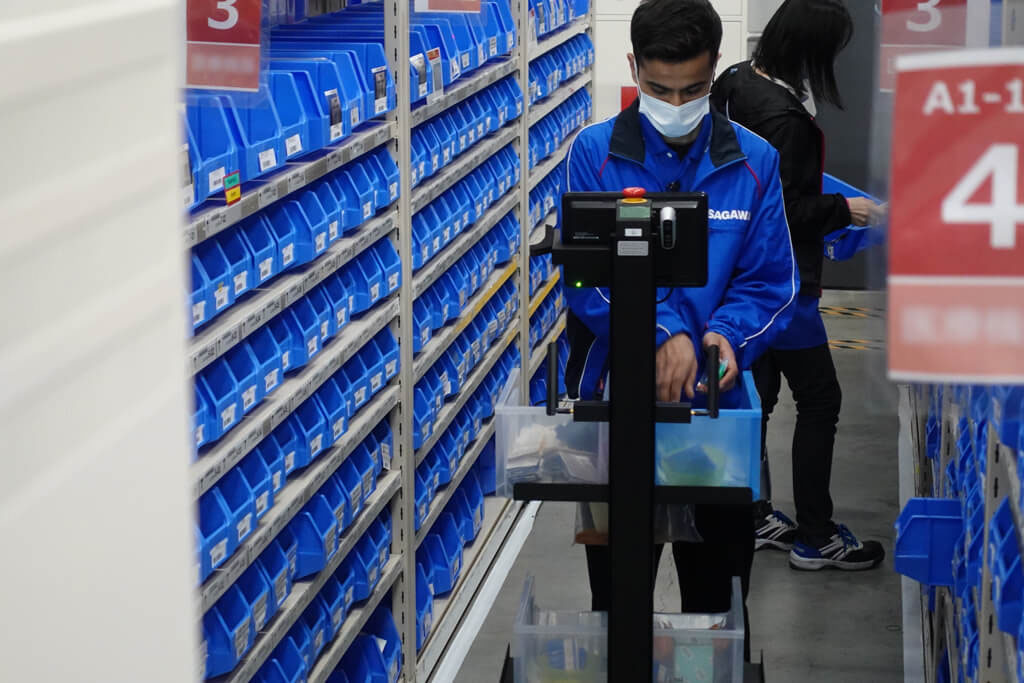
Q. What were the impressions of the on-site staff during the demonstration experiment?
“It was the first time for the entire field staff, including the employees, to experience picking. My first impression was that they all enjoyed it. I think there was a stereotypical notion that picking was done manually with a handheld device. But since the robot was already functional in the experiment, many employees had a positive first impression – that it was ‘fun’ to work with the robot,” Mr. Wakamatsu said.
Q. After the demonstration experiment, when did you decide to introduce the system? Please tell us about your timeline.
“We conducted a three-month demonstration experiment from spring to summer of 2019. In the fall and winter of the same year, we made internal preparations for the implementation including internal approval. Since it was new infrastructure and technology, we had to discuss it carefully. It took some time before we got the final approval. In January of 2020 we finally got the go-ahead and placed the order. From there, we prepared the actual system, and the actual implementation project began in April. The actual system went into operation in August. It’s been about six months since we started using the system,“ commented Mr. Otani.
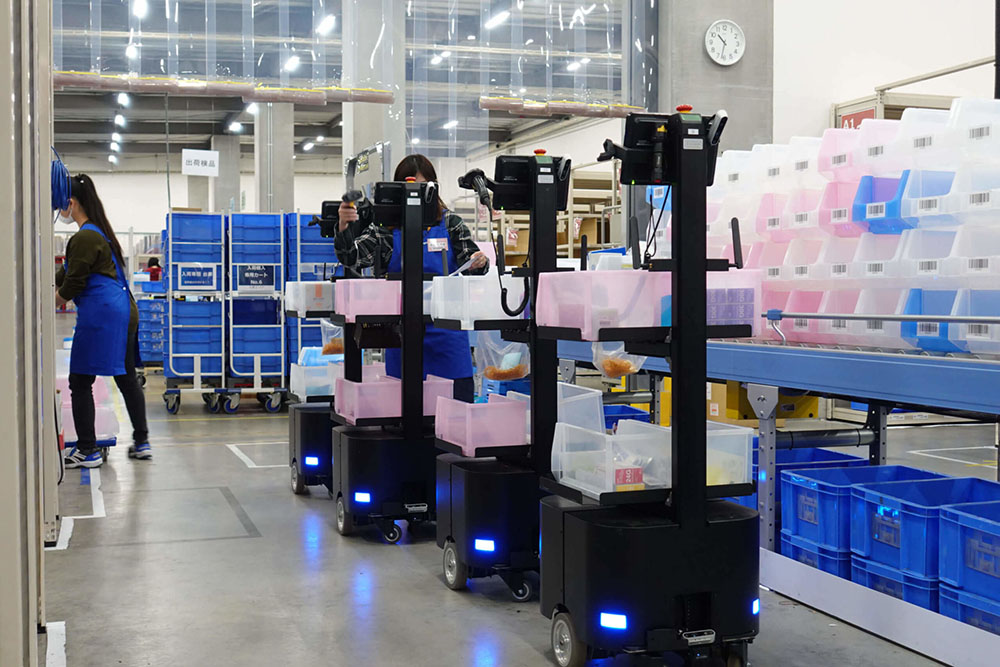
Q. Please describet the peculiarities of this warehouse and the areas you concentrated on which were factors to consider during the actual implementation.
“At this site, we receive orders from customers in almost real-time. W e are able to respond to them through a system that allows us to immediately ship the products while assigning a very detailed time badge. Some of the orders need to be shipped urgently. I believe this is one of our strengths,” expressed Mr. Wakamatsu.
“Because of this, the lead time in the warehouse was the most important issue for us. We knew that we wanted to maintain the quality even after introducing the robot. After the introduction of the robots, we believe that we have been able to achieve these goals.Q. I heard that you conducted a simulation before the demonstration experiment. What was it like?
“The simulation was based on a realistic work environment and mapping the actual work site. In the simulation, we were able to compare precise numbers under multiple conditions, such as changing the number of people and robots. This was very helpful as it provided us with a basis for making an appeal to the senior stakeholders,” said Mr. Otani.
“Mr. Takayuki Kobori, who was in charge of the hiring) Rapyuta Robotics, also gave us details about the company’s simulation.”
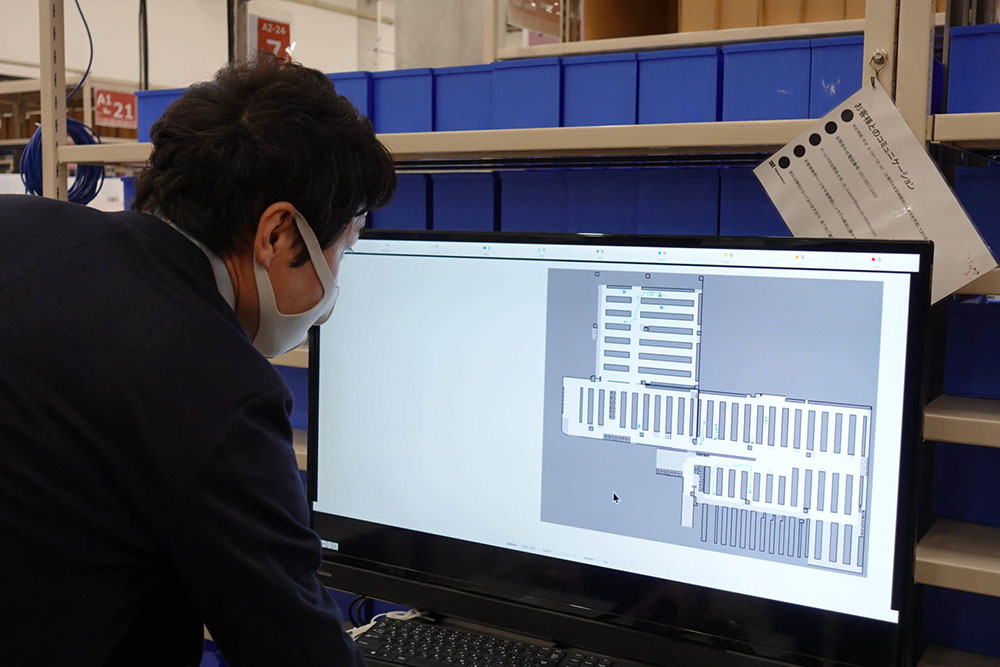
“For SGL, we provided two types of simulations: the first was simply a simulation to see how many workers would be able to work with the robot and how many workers would be productive.
“The second is a simulation to see if the robot can withstand frequent changes in the workplace. For example, in this environment where orders are coming in at a near real-time rate, how would you react ifyou were in the middle of picking and something came in that needed to be picked faster and with higher priority? How would you follow up on it? It is a complex and practical simulation. This was something that Mr. Wakamatsu and the other leaders on the shop floor were most concerned about. It was significant that we were able to show them this simulation in advance and gain their understanding,” Mr. Kobori said.
Q. How much of a gap was there between the simulation and the current performance?
“I don’t think there was a huge gap between the simulation and what we are doing now,“ confirmed Mr. Otani. “At first, because it was our first time, we had trouble keeping up with the simulation figures. But now, six months later, we have achieved figures that seem to fit. The working hours and the volume of the morning flight are now close to each other.
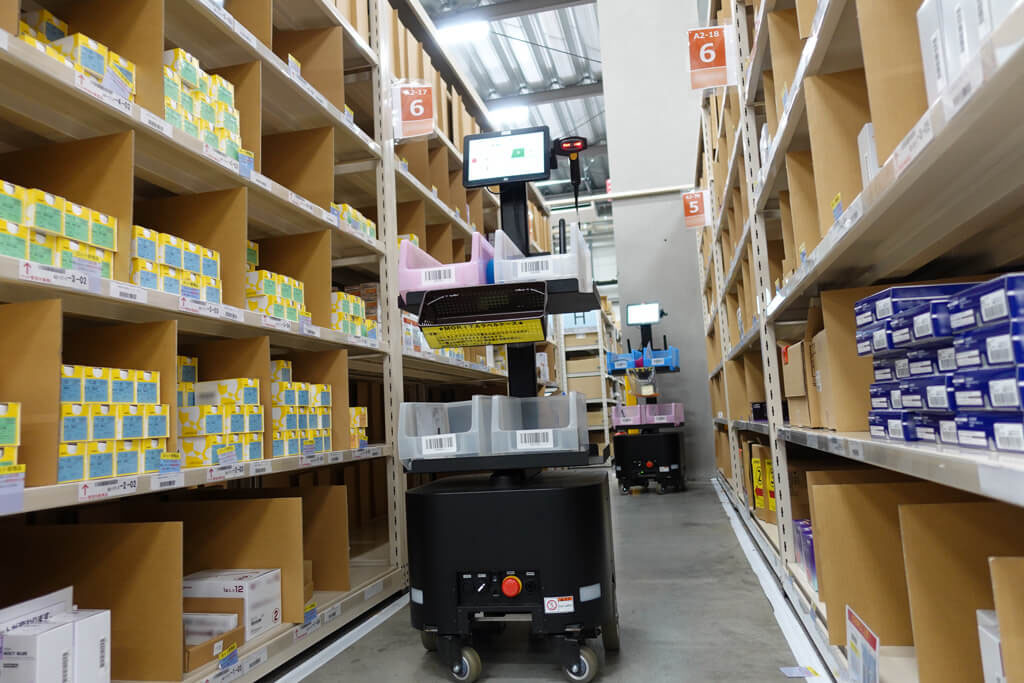
Q. Were there any environmental changes you made before installing the AMR?
“From the beginning, we set the shelf at the standard width of 90cm so that the AMR and workers could pass each other. However, we are constantly adjusting the shelf arrangement of products in each zone. For example, there are products A and B placed in an area, and the aisle leading to it may be congested with several AMRs. With only humans, it would have been more efficient to simply keep the inventory concentrated. But when the robots gather, they become congested. For this reason, we made some guidelines, distributed the zones of products, and placed them in a balanced manner. We have a zone for A-grade products here and one for B-grade products on the other side, and so on,” said Mr. Wakamatsu.
Q. What kind of results have you seen in the actual operation of AMR?
“ The amount of processing per hour has gone up tremendously. For example, if there is a day when the robot cannot be operated due to system trouble, the progress is completely different. Even if it’s only for an hour or two, it clearly has a big impact. As soon as the AMR stops, we can see that the progress becomes visibly worse,“ continued Mr. Wakamatsu.
“In terms of numbers, we have doubled our productivity since the introduction of the AMRs. In terms of processing volume, there is a big difference between when we were using only the handheld system and now with the the AMRs.”
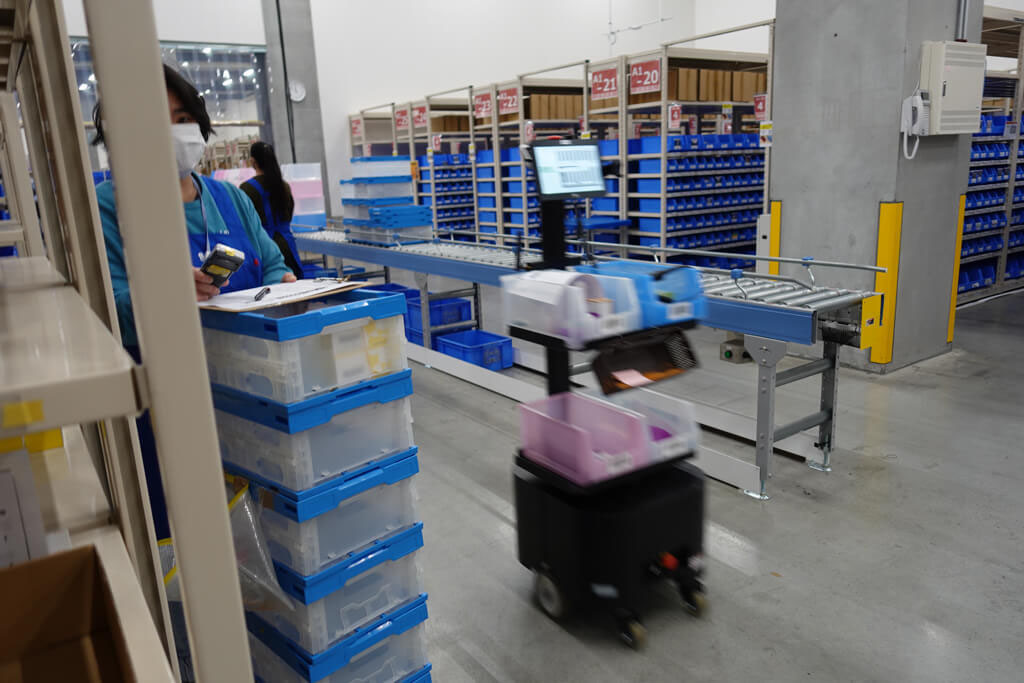
Q. When I look around the warehouse, I see that there is still a mix of human-powered cart pushing and handheld-only work. Why don’t you leave all the work to the AMRs?
“First of all, there is the issue of the volume of the products to be shipped. Rapyuta’s AMR has a capacity limit, so large products have to be handled by humans.There is also the issue of efficiency.As I mentioned earlier, for example, when there is only one line or one store, it is better to have a human with a handy (hand-held?) terminal to pick up the items quickly. When using an AMR, loading and unloading are involved, so it takes more time to go back and forth.Naturally, there are patterns in which AMR cannot be used depending on the conditions of the item. We use it in the right place at the right time, sending data to the handy side for items with a large volume” said Mr. Wakamatsu.
Q. How do you control the distribution of the data?
“SGL employees look at the allocation data sent to the Warehouse Management System (WMS), sort it, and send it to the Laputa system. We have to do this the same day. f there is not enough material, we assign it to a robot,” stated Mr. Wakamatsu.
Q. Are there any other innovations you made to the operation after the installation?
“After the installation, Rapyuta analyzed the movements of the on-site staff. The movement analysis revealed a lot about people looking for the robot.We are trying to reduce the amount of time spent looking for the robot. So after listening to opinions of people on-site, we tried some new ideas such as attaching LED light beams to the ceiling to get a rough idea of the AMR’s location.In addition to the sound that the AMR originally emits, we are working to understand its location,” Mr. Wakamatsu added.
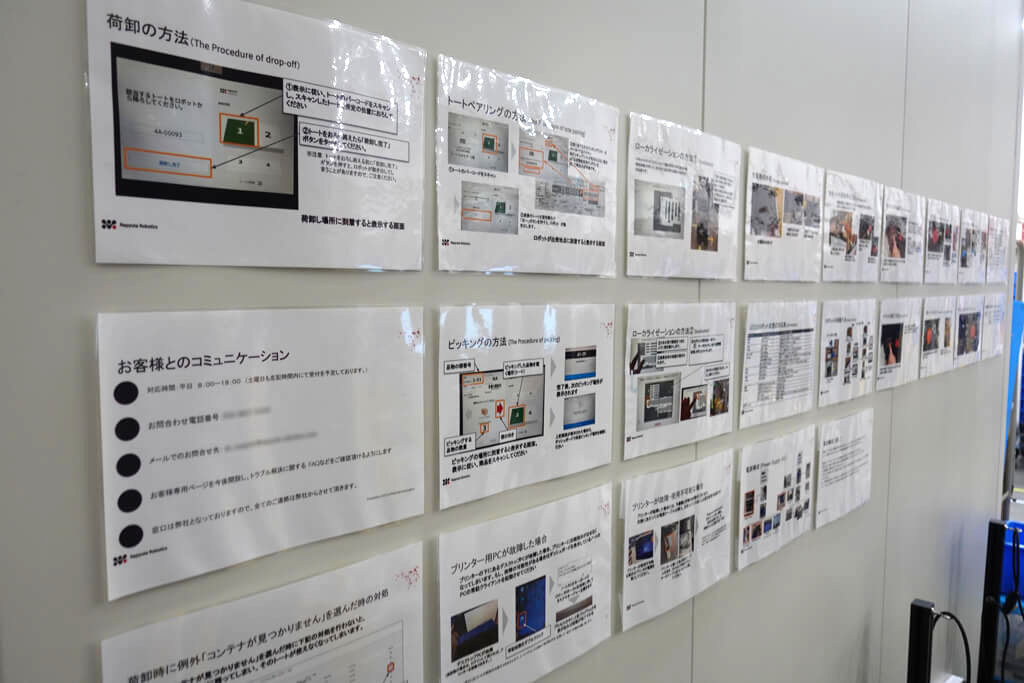
Q. Please share with us comments from the frontline staff after the AMR introduction.
“Because the robot would stop at the shelf to pick and wait for the staff, the staff members who were picking manually with carts thought that robots were in their way at first,” laughed Mr. Wakamatsu. “I had an idea that this might be common when humans and robots work together, but I was still wondering if this would happen.By sharing and valuing the mindset of “working with robots” among the staff, such comments were no longer raised immediately. And the number of staff who ask “How do you do it?” proactively increased as well. We also conducted frequent training sessions to familiarize the staff with the robots, which is something we did from the frontline.”
Q. What kind of training did you give the staff?
“We didn’t do anything rigorous, but simply started by telling them to touch the robot first.
Then we used the operation manuals and other materials made by Rapyuta. I think it was good to have them touch the robot initially, so they could visualize working with the robot as a partner.. As a result, six months later, there is almost no sense of discomfort in the workplace. No one ever says, “You’re in my way,”’ laughed Mr. Wakamatsu, “and I feel that we are picking in harmony with each other now.”
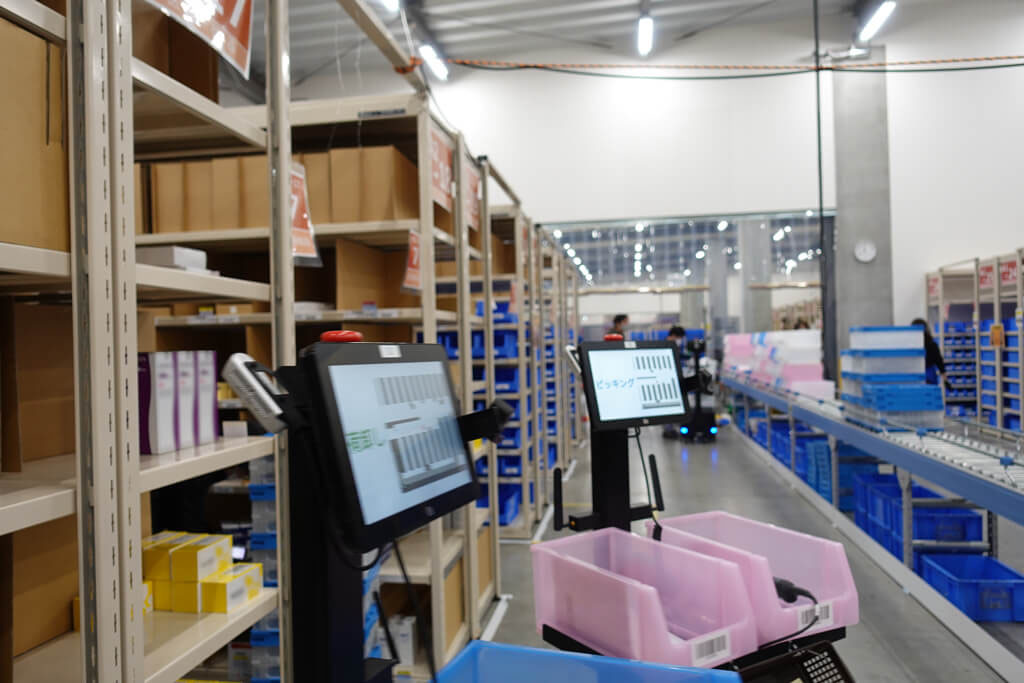
Q. Have you been able to achieve the cost-effectiveness that you originally targeted?
“ After six months we achieved about 70% of our target. I personally think that’s about right, but I’m hoping for continued improvement,” said Mr. Wakamatsu.
Q. What are your future plans for SGL?
“In terms of the operation center here, we are scrutinizing the patterns of suitable commercial areas. However, now that we have a good track record here, we are examining the possibility of introducing the system at other sales offices around the country,” said Mr. Otani.
Q. Rather than increasing the number of AMRs at this one location, you are planning to adopt similar AMR solutions at your other offices?. Is that how significant the impact was?
“Yes, aspects of this system match SGL’s operational methods. Rather than being completely mechanized, it is half human and half robot, and in case of an emergency, we can return to the same human-only operation as before, so we can manage risk. We feel that this is a good fit for us as a 3PL provider,”affirmed Mr. Otani.
Summary
Overall, the SGL team felt that the AMRs are solving their business challenges and will help them grow. While some SGL warehouses do not have a large enough floor capacity to accomodate AMRs, other SGL warehouses with medium-sized distribution sites do, and can take advantage of the AMR solution. These warehouses, without the fluctuations in season, week, and time, can best assimilate the introduction of fixed, large systems and robots without concern for bottlenecks. As in the case of SGL’s introduction, AMRs can absorb a certain workload with their on-site capabilities. f the volume of shipments is too large for an AMR to handle, the team can compensate for the AMR’s lack of processing capacity by having people work on it.
From this field example, we can see that the ease of use and flexibility of the AMR to collaborate with humans leads to multiple business applications.
